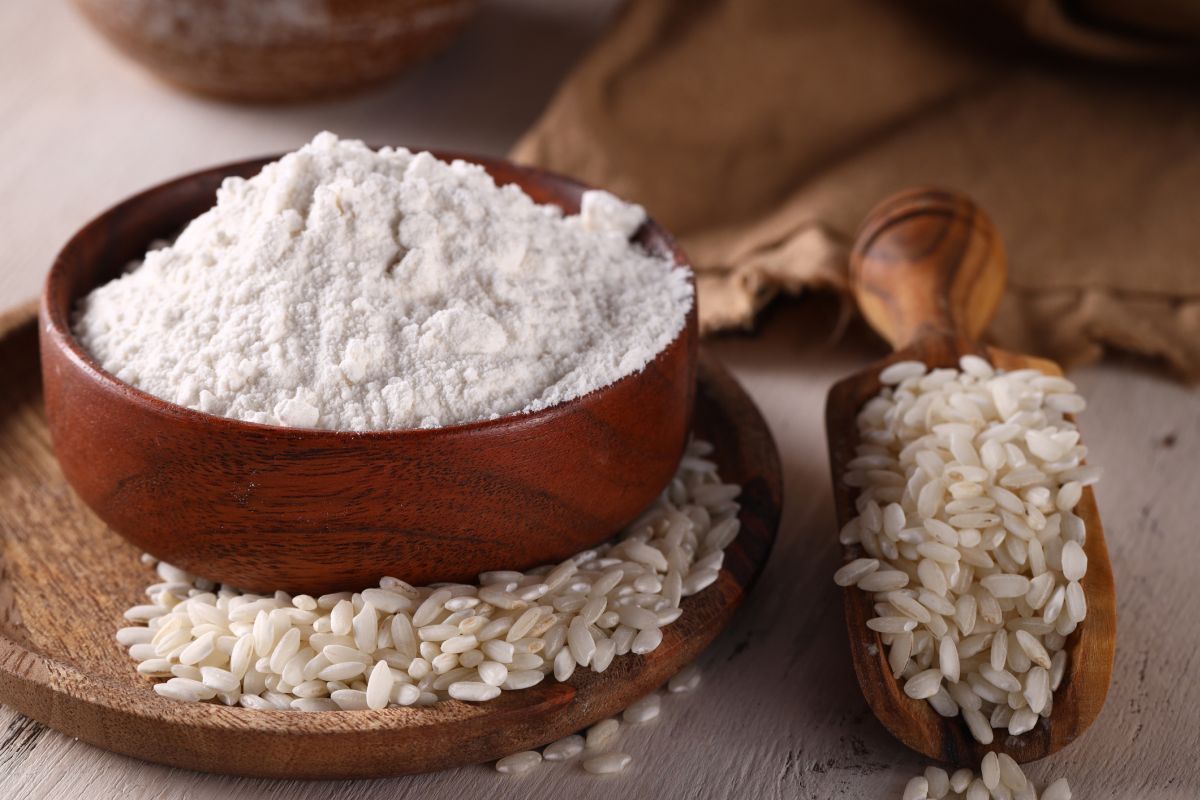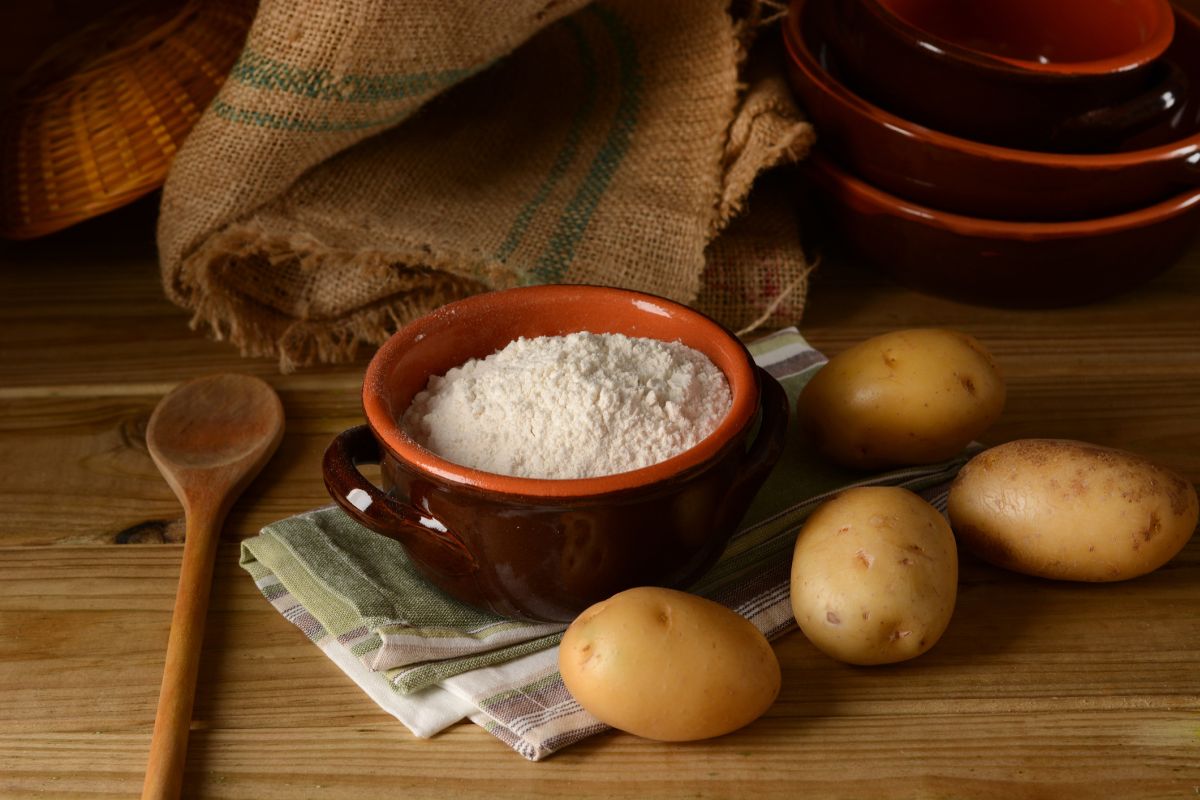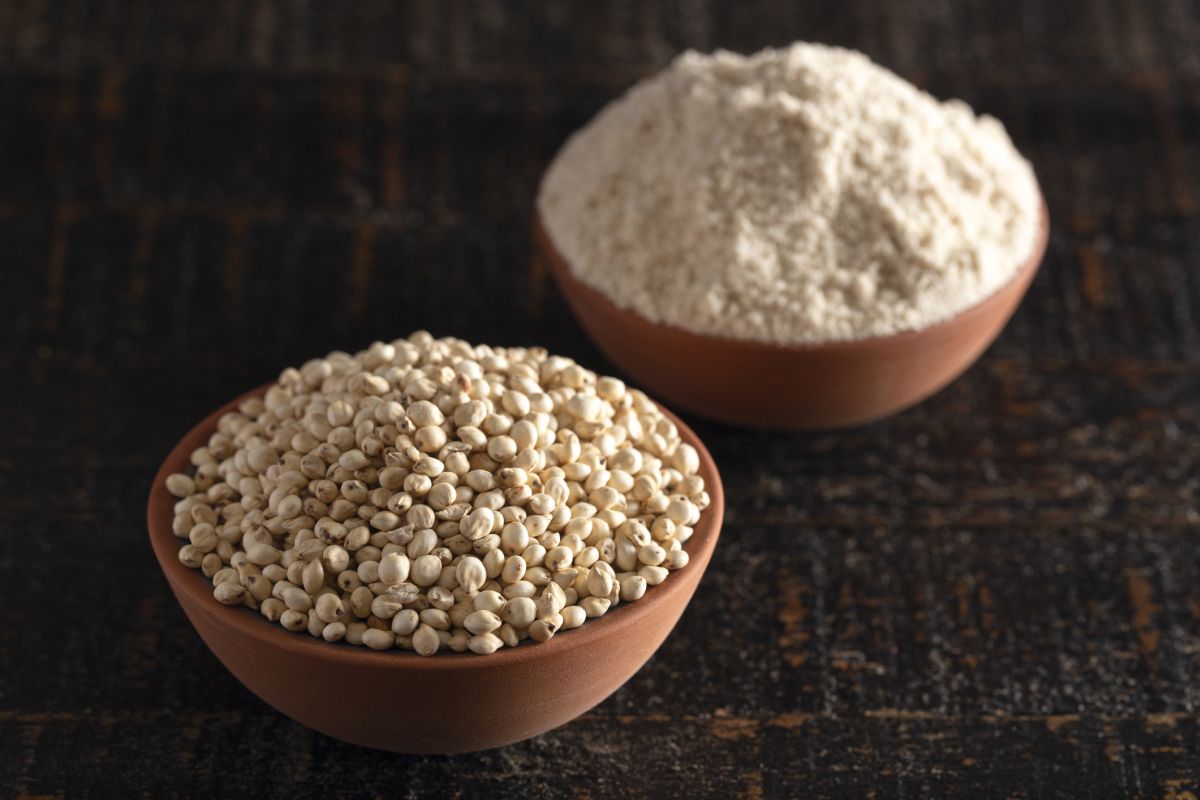You may require a rice flour substitute from time to time. Luckily, there are plenty of great options to use to replace rice flour in dishes, whether you need them to be gluten-free or not.

What is Rice Flour?
Rice flour is a type of flour made from ground rice grains. It can be made from white or brown rice and is commonly used in gluten-free baking and cooking. Rice flour can be used on its own or in combination with other gluten-free flour to make bread, cakes, cookies, and other baked goods.
Common Uses for Rice Flour
- Thickener for sauces and gravies
- Gluten-free baking
- Coating or breading for meat, fish, and vegetables
- Binding agent in most recipes
Difference Between Rice Flour and All-Purpose Flour
The difference between rice flour and all-purpose flour is in its texture, flavor, and ability to absorb liquids. Rice flour is gluten-free and has a slightly sweet flavor. Whereas, all-purpose flour contains gluten and has a neutral flavor.
All-purpose flour has a slightly coarser texture. Whereas, rice flour is more absorbent.
10 Best Rice Flour Substitutes
1. Almond Flour
Almond flour is a popular gluten-free flour that can be used as a 1:1 substitute for rice flour. It has a slightly nutty flavor and a coarse texture, which makes it great for baking. Spiceography notes that almond flour has fewer calories than rice flour.
2. Coconut Flour
Coconut flour is a high-fiber, low-carb flour that can be used in place of rice flour. It has a strong coconut flavor and a fine texture. When using coconut flour, be sure to add more liquid to the recipe, as it is very absorbent. All Recipes shows you how to use this tasty flour.
3. Cornstarch
Cornstarch is a fine powder made from corn that is often used as a thickener. It can also be used as a rice flour substitute in gluten-free baking. Leaf TV explains the difference between rice flour and cornstarch as a thickening agent.
4. Potato Flour
Potato flour is made from dehydrated potatoes and has a fine texture. Not only can potato flour be used as a thickener in sauces and gravies, but it can also be used in gluten-free baking. You can use either potato starch or potato flour, depending on how much you need the ingredient to thicken your recipe. All Recipes explain the difference between the two.
5. Buckwheat Flour
Buckwheat flour is a gluten-free flour made from ground buckwheat. It has a nutty flavor and a fine texture, making it a great substitute for rice flour. Healthline explains some of the many health benefits of using buckwheat flour.
6. Tapioca Flour
Tapioca flour is made from the starchy root of the cassava plant. It has a fine texture, very similar to rice flour and is often used as a thickener. It has a neutral taste so you can easily use it to replace rice flour without affecting the taste of your dish. From The Larder has a complete overview of the flour.
7. Chickpea Flour
Chickpea flour, also known as garbanzo bean flour, is made from ground chickpeas and is gluten-free. It has a slightly earthy flavor and a coarse texture, making it a great substitute for rice flour in savory dishes. The Kitchn shows you how to cook with chickpea flour if you haven’t used it before.
8. Sorghum Flour
Sorghum flour is a gluten-free flour made from ground sorghum grains. It has a mild taste that can be described as slightly bitter, making it best to use in savory dishes or bread. From The Larder has a complete overview of how to use this flour.
9. Oat Flour
Oat flour is made from ground oats. It has a nutty but mild flavor and works very well as a replacement for rice flour in most baking recipes. You can very easily make your own at home by following Love and Lemons’ method.
10. All-Purpose Flour
If you don’t need your flour to be gluten-free, your easiest substitute for rice flour will be all-purpose flour. It can be used in every recipe where you would use rice flour in a 1:1 ratio. Live Strong explains some differences between the two.
Tips for Rice Flour Substitution
- Taste – rice flour is slightly sweet, so choose a similarly sweet alternative or neutral-flavored flour for best results.
- Liquids – almost every flour will absorb moisture differently. You will have to test and adjust the liquid ratios in your dishes.
- Combining flours – if your chosen substitute doesn’t have all the properties you need, you can mix different flours until you get a blend that works for you.
- Texture – some flours react differently to moisture and heat, which may result in a smoother or rougher texture in the end.


Leave a Reply